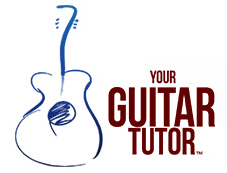Planning your guitar lessons relieves you of the stress of having to create an on-the-spot plan whilst in the lesson.
Not all great guitar lessons have to be planned. However, it is important to know when some careful planning would make an average guitar lesson great. In this post I want to share with you some tips on planning guitar lessons that you can easily apply to your own guitar teaching business.
You will learn about the following:
- Thinking in the long term – how to forward-think to create a series of lessons to give the student an idea of the direction the lessons will move in.
- Save your self time by utilising previous lesson plans – notice when one student wants to take their guitar playing in a similar direction to another student you have previously taught.
- The balance of a lesson – hitting the right balance between a variety of lesson activities to suit the particular student.
Thinking in the long-term
From my experience, the students that do best are usually the ones who have an idea of the direction they want to take their playing in. They have tastes and wish to play guitar like someone else.
Some players have no idea what they want to play, but they just enjoy the sound of guitar or think it would be fun to learn. If you teach them random things each week, there is a fairly high chance they will soon get frustrated as they don’t have a vision of where all this hard work is going to take them. It is your job as the guitar teacher, to help these students develop their taste. Find out what  makes them excited in the lessons and push in that direction.
To think in the long-term you need to think of the logical next steps towards playing in the direction the student want to go. If the student has no preferred direction you will have to create the vision. Once you have evaluated where the student’s current ability stands, then you can create a few areas of development to focus on, and week on week gradually progress towards becoming proficient in these areas. For example, if your student can play all the open chords and has a good grasp of strumming then you may consider the next lessons to be focused on understanding the CAGED system, so that he or she can play chords in different areas of the fretboard. You may also notice that your student can play one position of the A minor pentatonic, but has not yet learnt how to play anything musical with the scale. In this case you could create a 6 week plan to develop phrasing ability by learning classic licks in this position of the scale. If you are not sure of what content to use in your lessons you may be interested in my beginner guitar ebook or my intermediate to advanced guitar ebook.
.
Save your self time by utilising previous lesson plans
As you become more experienced teaching guitar, you will find that it is hard work preparing lessons, traveling to student’s homes, scheduling lessons and keeping customer relations good. It soon becomes a logical move to utilise previously made lessons plans which would be a good fit for another student you are teaching. This is not to say that you should be taking shortcuts and trying to get away without preparing. It is a tactic to save you time when you need it, whilst still delivering a quality guitar lesson.
For example, I have multiple students that want to develop their alternate picking technique. If I already have some great lesson plans on improving your alternate picking, it doesn’t make sense to plan the lessons again. However, you do need to approach the lesson differently depending on the student. If you have a student who is slower, then you will have to accommodate for this and consider splitting the lesson across two lessons. You may wish to slightly adapt the original lesson plan accordingly based on how the current player is reacting to it.
This tactic has saved me hundreds of hours when I have needed the time most, and I have still maintained the integrity and standards that I teach to.
The balance of a lesson
Getting the lesson plan balance right, is a tricky one. It is completely based on the guitarist, and can change from week to week. Don’t panic though if you are new to teaching guitar and thinking that this sounds scary, because with experience this gets easier and easier to manage.
I guess you could say there is a lot of psychology involved in becoming a good guitar teacher. You need to be able to read your students mind through how they are responding to the lesson you are presenting them with. Because guitar teaching is done on a 1-to-1 basis 95% of the time, you have the ability to focus on that one person and use your flexible teaching style to please them.
You will get students that are not enjoying something and will not say that they don’t like it, because they are used to the school approach of attending the lessons whether they like it or not. As a private service, you aim to please. So be aware of body language, energy levels and student progress or else you will lose your student if they continue to not enjoy the lessons.
Hitting the balance right means supplying them with a variety of tasks to focus on throughout the week. If they are given one thing to focus on, there is a chance you may teach them next week and they decided they didn’t enjoy the task so skipped it.
How do you plan your guitar lessons?
This post is part of a series targeted at guitar teachers who are looking to make more money and have happy students.

